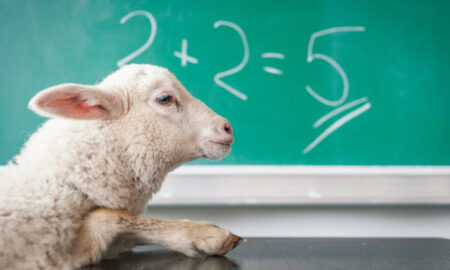How to Teach Mathematics – A Guide for Parents and Teachers
Mathematics is a difficult subject for most of the children. Some kids may understand math concepts more instinctively but it does not mean that the subject is easy for all the students. This is the point where you have to play the as a parent or as an effective math teacher. There are a large number of methods which parents can use to guide their children to improve their math skills. Here are some helpful strategies to help you teach mathematics to your children.
- Start with counting:
Learning math begins with counting. Believe it or not, you should start teaching your child to count and other simple math concepts from a very early age.
Example:
If you have three apples, put them on a table and invite your child to count them with you. Activity of this type helps young children to grasp the concept of numbers. - Using pictures:
Pictures are always helpful in teaching basic math concepts. Joining visual aides and pictures can to make the concepts easier to understand for kids who are just to learn how to count. Moreover, to help children learn numbers like pictures used to teach. So, you should use pictures while telling your child how to count. - Raise the bar for all:
For math strategies to be effective, teachers must first make the students to believe that they can learn mathematicians. A start with high expectations for all students encourage will certainly help them. It has been noted that most of the girls have internalized the idea that math is not for them. - When to Start Teaching?
You must be confident and know teaching standards. When you find the students ready for learning, you should start teaching rather than getting late.
- Set a testing Standard:
Normally, a standard test of students is annual examination. But you have to prepare students for it. You should use assessments to ensure that students understand the concepts. What you learn will certainly guide your understand which areas need more work. Have discussion sessions with students individually and collectively.. After these discussion sessions, make decisions to go faster or slower or put students in groups. - Offer Choice:
We may create interest among the students by offering choice to math problems. Give students a number of options. Selection of answers from given options will decide whether they have mastered the skills you are working on or more work is needed. Moreover, you will come to know about the areas where students need more work. - Plant the seeds!
Leave no child inside! A school garden is a an excellent place to apply math concepts. Measurement, geometry, and data analysis are those topics which can be addressed through garden activities. More topics like operations, fractions, and decimals can also be taught in school garden. Additionally, garden activities can help to promote character education goals like cooperation, respect for the earth. - Add apps properly:
A large number of interactive software is available. This software can be used on touch-screen devices to teach the children. Kids who are reluctant to practice math facts with traditional pencil-and-paper resources will gladly do the same work if it is done on a touch screen. Many apps focus on practice via games, but there are a large number of items that encourage children to explore the content at a conceptual level. - Arrange math talks:
Communicating about math support for students process new learning and thinking. Engage students in conversations and ask them to describe why they solved a problem in a certain way. - Integration of Math and art:
Almost all children love art, and visual learners need a math strategy that works for them too. So, integrate art and math in teaching mathematics. A large number of concepts in geometry such as shapes, symmetry, and transformations can be applied in a fun art project. Also, use art projects to teach concepts like measurement, ratios, and division. - Try to Develop Understanding:
Meaningful and effective math education goes beyond memorizing formulas and procedures. Memorization does not develop understanding. Set high goals for students. You can ask the students to do some additional questions. In this way, teacher will have useful information and help the students to monitor their own progress. - Allow Positive Struggle:
If you give the students an authentic problem, ask a big question and let them struggle to figure out several ways to solve it. Your job as a teacher is to inquire the reasonable questions at the right time. Your job as a teacher or guide is to help them move forward and find the most appropriate solution.
Conclusion:
As a parent or teacher, your duty is to enable the kids understand the problem, try to find the solution and hence enhance their problem solving skills.
Note:
Click on Mathematics to read more articles.



Leave a Reply